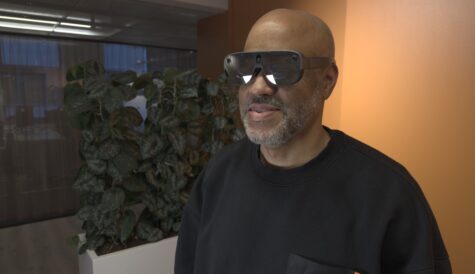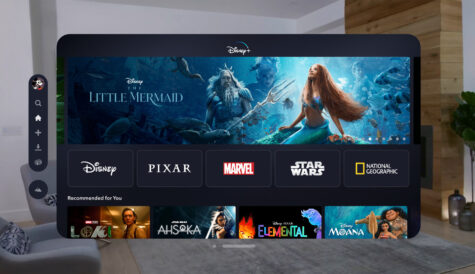
After more than 40 years of operation, DTVE is closing its doors and our website will no longer be updated daily. Thank you for all of your support.
A Future for VR TV?
Ivan Verbesselt, senior vice-president, group marketing, Nagra, looks at the future of virtual reality as an entertainment format.
 Virtual reality television (or VR TV) is finally here. Well, it is if we believe the hype. Long predicted to be the future of TV, VR has seen some tremendous growth over the past twelve months. Annual shipments of VR headsets are set to surpass 12 million units in 2017; worldwide revenues for augmented and virtual reality are forecast to reach $162 billion in 2020; and researchers predict that, by 2025, VR will have a global user base of more than 275 million people. But the truth about VR TV is that it faces some real challenges.
Virtual reality television (or VR TV) is finally here. Well, it is if we believe the hype. Long predicted to be the future of TV, VR has seen some tremendous growth over the past twelve months. Annual shipments of VR headsets are set to surpass 12 million units in 2017; worldwide revenues for augmented and virtual reality are forecast to reach $162 billion in 2020; and researchers predict that, by 2025, VR will have a global user base of more than 275 million people. But the truth about VR TV is that it faces some real challenges.
Instead of more hype we need perspective. In 2014, Oculus founder Palmer Luckey boldly declared that VR devices would replace TV sets. Statista shows that, in 2015, there were 253.3 million television owning households. By contrast, Statista shows that, in 2016, sales of the Oculus Rift were around 3.6 million units. So the change hasn’t happened yet. But the big question is, will it? And what is standing in the way of this new – virtual – reality?
Cost
 Despite the potential of VR TV, it’s difficult to ignore the hurdles that stand in the way of mainstream adoption. First and foremost is the cost for networks. It is no small feat to adapt your studios, buy new – and largely untested – cameras, and design sustainable distribution and payment models targeted at a largely unknown consumer. This is revenue, after all, that could be reinvested in improving services for the millions of households who already watch TV. And with prices for headsets starting at £500, many users could be put off by the price alone.
Despite the potential of VR TV, it’s difficult to ignore the hurdles that stand in the way of mainstream adoption. First and foremost is the cost for networks. It is no small feat to adapt your studios, buy new – and largely untested – cameras, and design sustainable distribution and payment models targeted at a largely unknown consumer. This is revenue, after all, that could be reinvested in improving services for the millions of households who already watch TV. And with prices for headsets starting at £500, many users could be put off by the price alone.
Experience
Moreover, ‘kinetosis’, the dizzy sensation felt when immersed in VR, is a significant impediment for consumers used to the relaxing experience of watching TV. It is no coincidence, for instance, that most Oculus content is limited to ten minutes. As relevant as the tech challenges to creating long-form content is the fact that very few consumers will be willing to don VR headsets for hours at a time.
Tech
On top of this is the fact that the technology is still in the early stages of development. Content providers have to contend with clunky first-generation hardware with lower quality graphics than a high-end PC. The question is: how long will it be before VR chips become small enough, low power enough, and low thermal density enough, that we can actually build them into a pair of glasses? Although this is only a matter of time, the existing technology disproportionately appeals to video gamers and other early adopters. Studios too will have to find a way to integrate 360-degree VR cameras without interrupting their existing shows. For now, expect to see occasional cool demos of what we will see more widely in ten years’ time.
Viewpoint
With traditional camera work, you can engage the viewer with a small slice of a story, but with 360 camera work, you need to produce content that encompasses all angles, which may only be suitable for certain shows. However not all angles can be critical to the main story and there is a real risk that the user may quickly lose interest.
Although fascinating, VR TV has a long way to go. Tried and tested distribution strategies took the TV industry many years to get right – and the VR industry faces its own set of challenges. For now though, perfecting 360-degree TV, short-form VR content and fully-interactive VR gaming may pave the way for more innovations in the near future.


